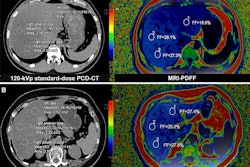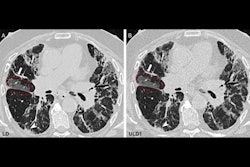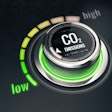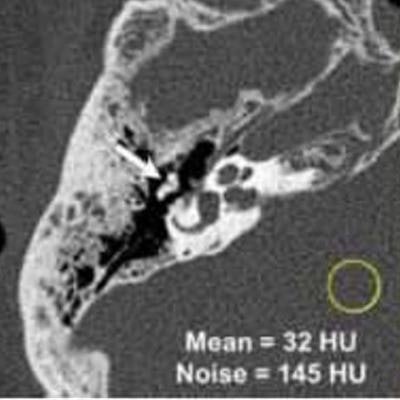
SAN DIEGO - Photon-counting CT is a new technology that could transform clinical practice, according to two presentations delivered September 15 at the International Society for Computed Tomography (ISCT) symposium.
The technology is so exciting that even the U.S. Food and Drug Administration (FDA) has called it the "first major imaging device advancement in CT in nearly a decade."
In their talk at ISCT 2022, presenters Richard Thompson, PhD, senior director of diagnostic imaging for Canon Medical Research, and Cynthia McCollough, PhD, of the Mayo Clinic in Rochester, MN, offered meeting attendees an overview of the technical aspects of photon-counting CT and how it could fit into clinical practice.
"Photon-counting CT is an emerging detection technology that may provide significant benefits for imaging," Thompson told session attendees.
New kid on the block
Photon-counting CT appeared on the radiology scene in September 2021, when the FDA cleared the Naeotom Alpha scanner from Siemens Healthineers. In March, the FDA cleared the OmniTom Elite photon-counting CT scanner from Samsung Neurologics. In 2018, nu:view secured the CE Mark for a dedicated breast imaging photon-counting CT system. There are at least four other photon-counting CT systems in the clearance pipeline, according to Thompson.
The technology's proponents cite its ability to reduce radiation dose and produce higher resolution images compared with conventional energy integrating detector (EID) CT.
"[With photon-counting CT] pixels can be made very small, enabling high resolution," Thompson explained. "Its increased active area and counting mode decrease image noise, its optimal energy weighting improves contrast to noise, and it is inherently spectral."
How does it work? Conventional CT requires a two-step process: x-rays are converted to light and that light is converted to an electronic signal. The benefit of this is that the signal is linear and the technology is mature, cost-effective, and reliable.
But conventional CT technology is also limited, requiring the device's detector to contain light to a single pixel -- which can affect radiation dose efficiency -- and all of the signal is integrated, including noise, Thompson said.
Photon-counting CT improves on conventional CT in part because of its one-step process in which the x-ray is converted directly to electrons.
"Photon-counting CT can be fast -- a single pulse is 10 to 20 nanoseconds," Thompson said. "And with fast electronics, each x-ray can be measured."
Yet the technology does have its challenges, including physics concerns like "pile-up" (when the pulse rate is high and it becomes difficult to discriminate and count individual x-rays), engineering concerns (data rates are two to 35 times higher, and thermal issues and new materials and electronics need to be managed), and business concerns (such as cost), Thompson cautioned.
So with all of this in mind, should radiology departments jump on the photon-counting CT train? It depends, Thompson said.
"In the end, it may not be a matter of what is best, but what is best for your practice," he said. "[Consider your] clinical and research needs, the cost, the applications [you'd use the technology for], your workflow, and the relationships you have with vendors."
Clinical benefits
McCollough listed photon-counting CT's many potential clinical benefits, including the following:
- Reduced electronic noise
- Increased iodine contrast-to-noise/dose efficiency
- Higher iodine signal at high kV
- Better spatial resolution
- Lower radiation dose
- Reduced beam hardening and metal artifacts
The reduction of radiation dose is particularly promising with applications such as lung cancer screening, McCollough said, citing a study that showed that photon-counting detector CT offered better Hounsfield unit (HU) stability at lower dose settings with better reproducibility than EID. McCollough also shared images that show the difference between conventional CT and photon-counting CT across a variety of applications.
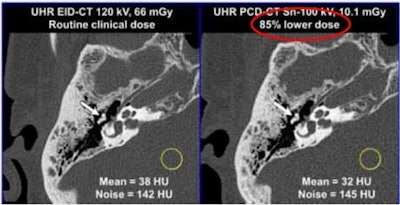 Bony trabecula and scaphoid fracture line are better seen with photon-counting CT with an approximately 50% dose savings. Increased sharpness is due to the spatial resolution and sharper reconstruction kernel permissible with photon-counting CT. UHR = ultrahigh resolution. EID = energy-integrating detector. PCD = photon-counting detector. Image courtesy of Cynthia McCollough, PhD.
Bony trabecula and scaphoid fracture line are better seen with photon-counting CT with an approximately 50% dose savings. Increased sharpness is due to the spatial resolution and sharper reconstruction kernel permissible with photon-counting CT. UHR = ultrahigh resolution. EID = energy-integrating detector. PCD = photon-counting detector. Image courtesy of Cynthia McCollough, PhD.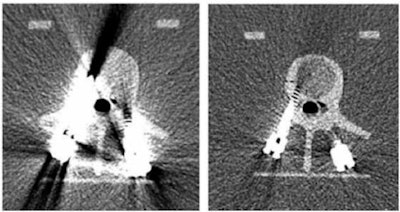 Improved visualization of arteries of the hand up to digital branches due to higher spatial resolution of photon-counting CT. Image courtesy of Cynthia McCollough, PhD.
Improved visualization of arteries of the hand up to digital branches due to higher spatial resolution of photon-counting CT. Image courtesy of Cynthia McCollough, PhD.Photon-counting detector CT could be the next best thing in the modality, McCollough concluded.
"It's a new era of CT," she said.






